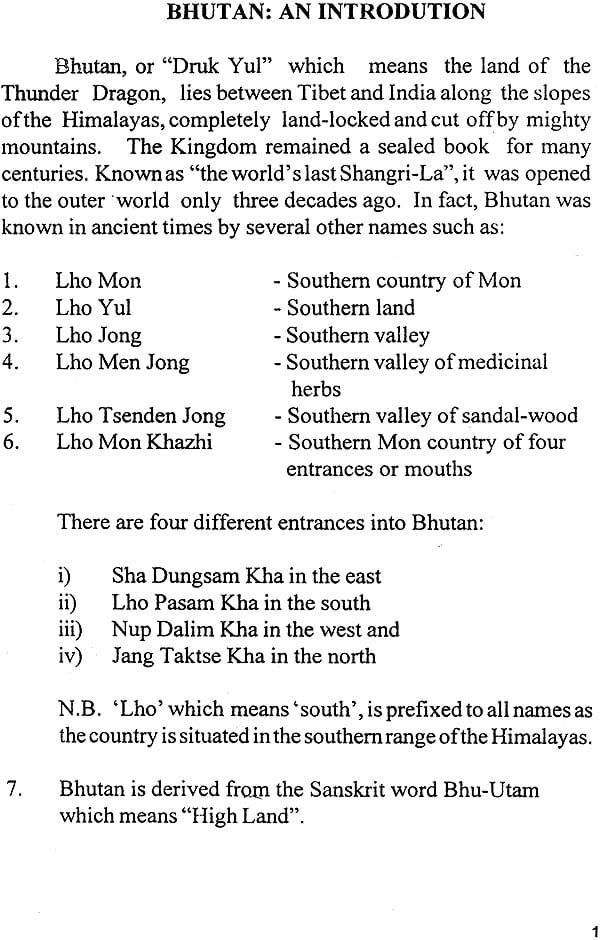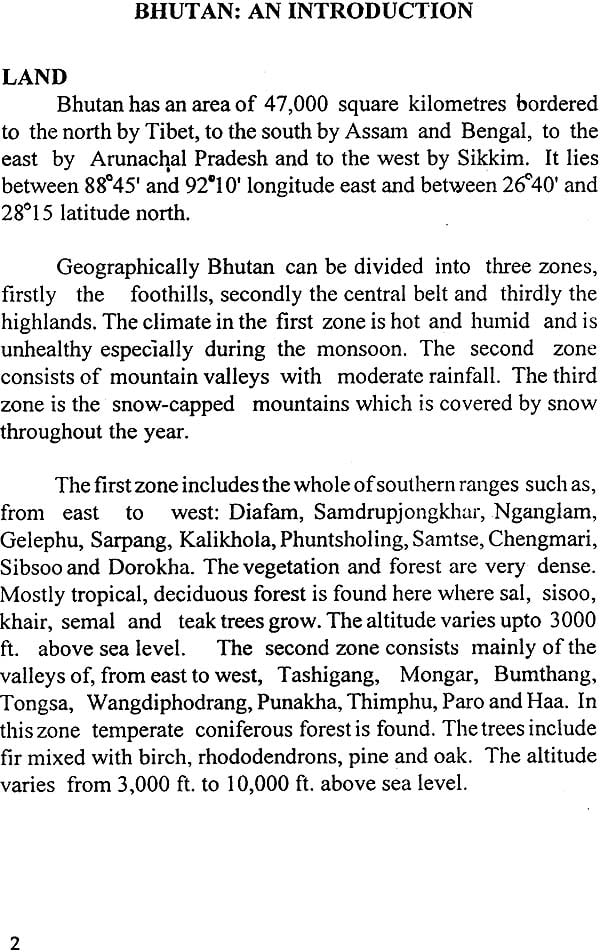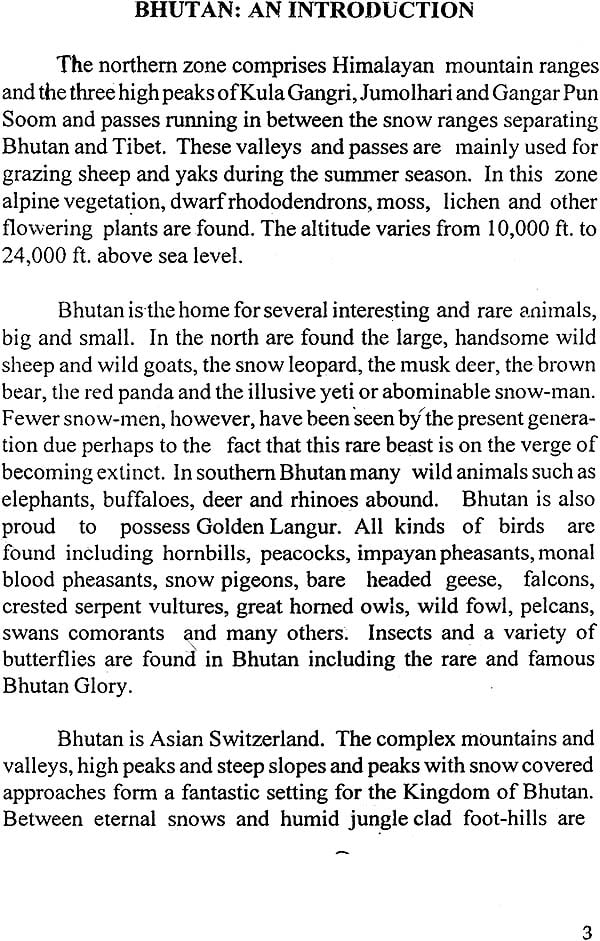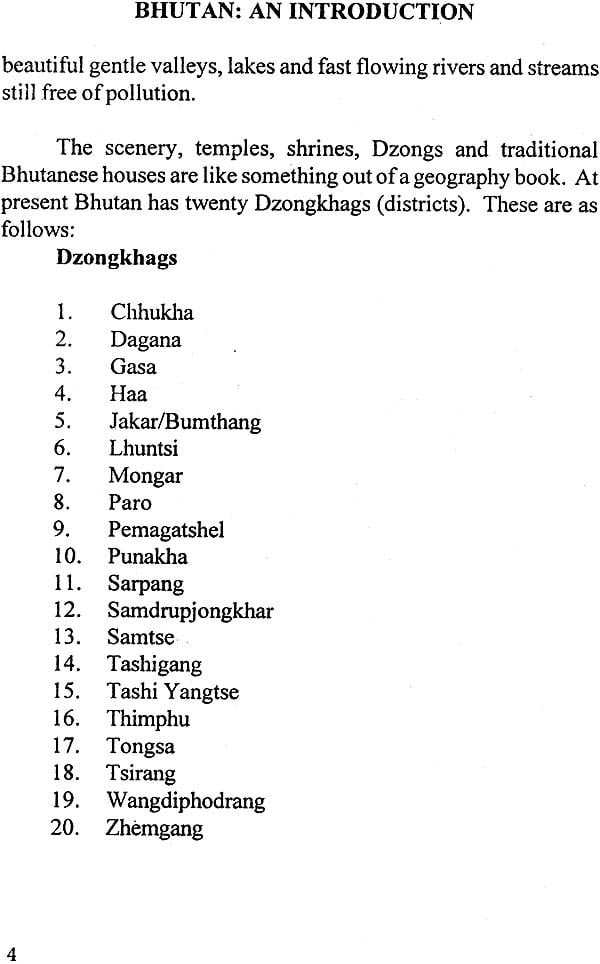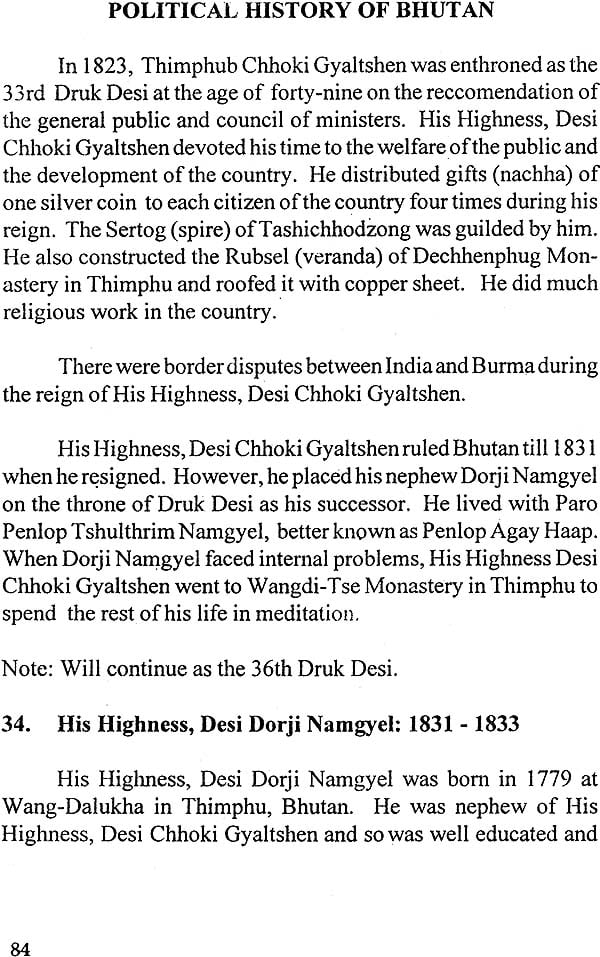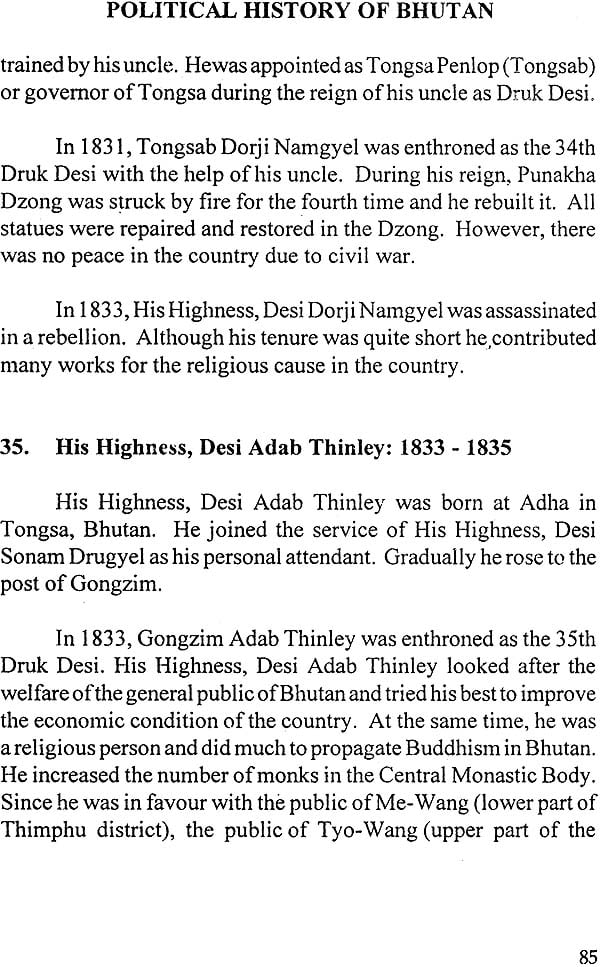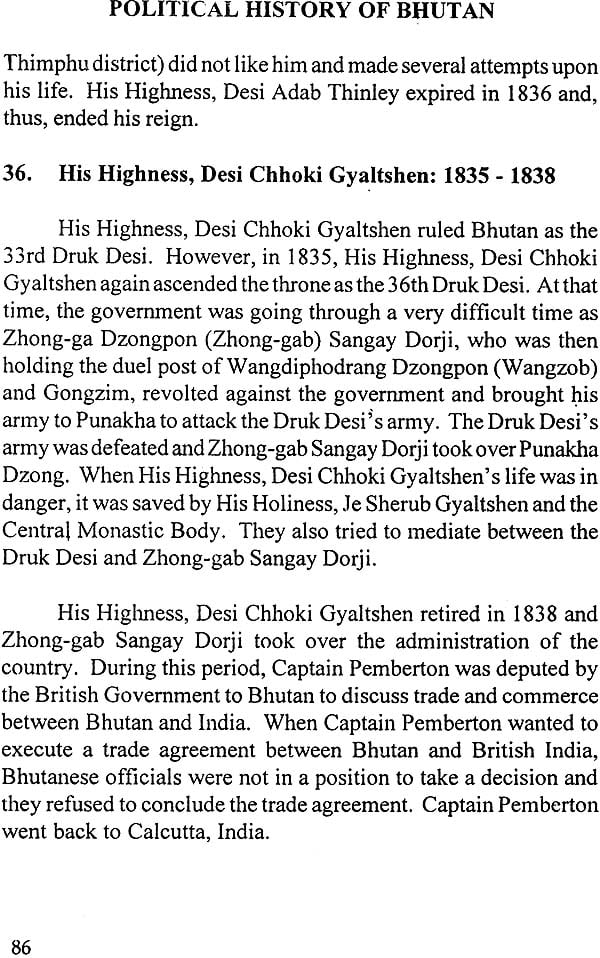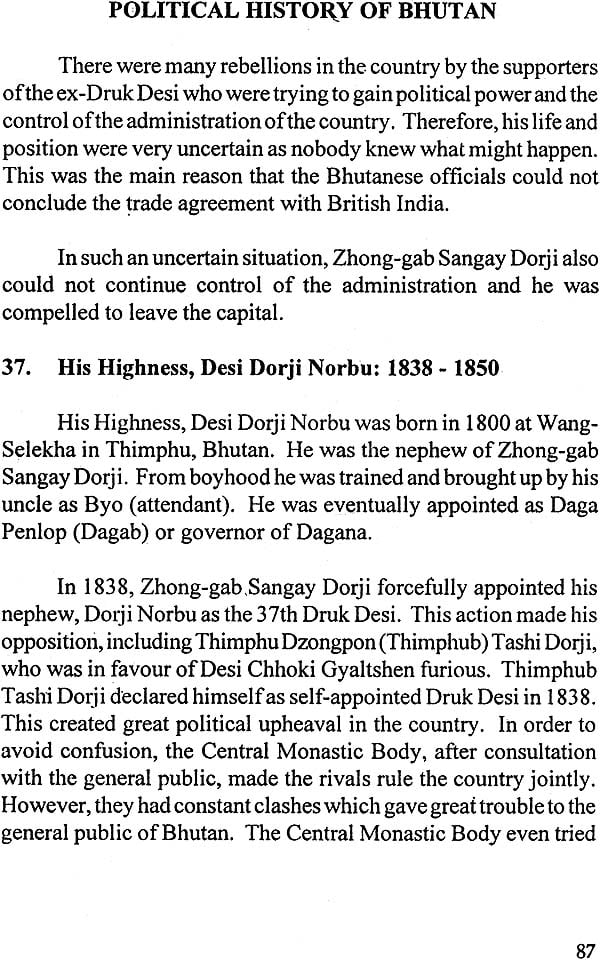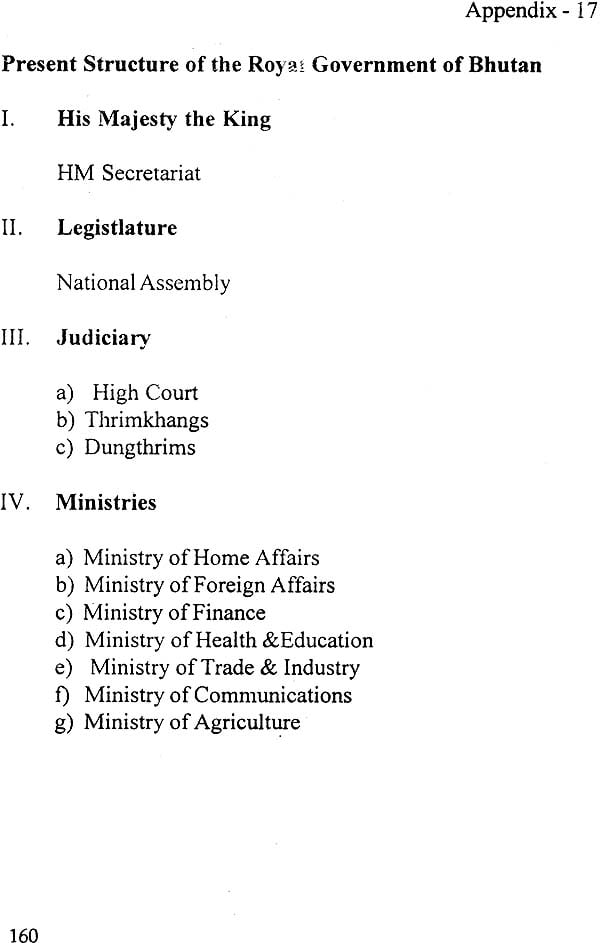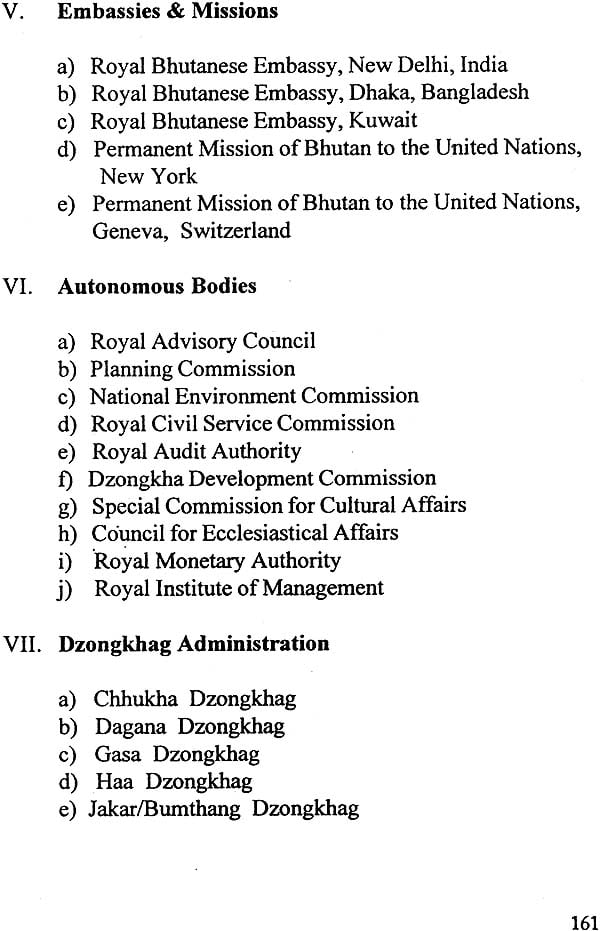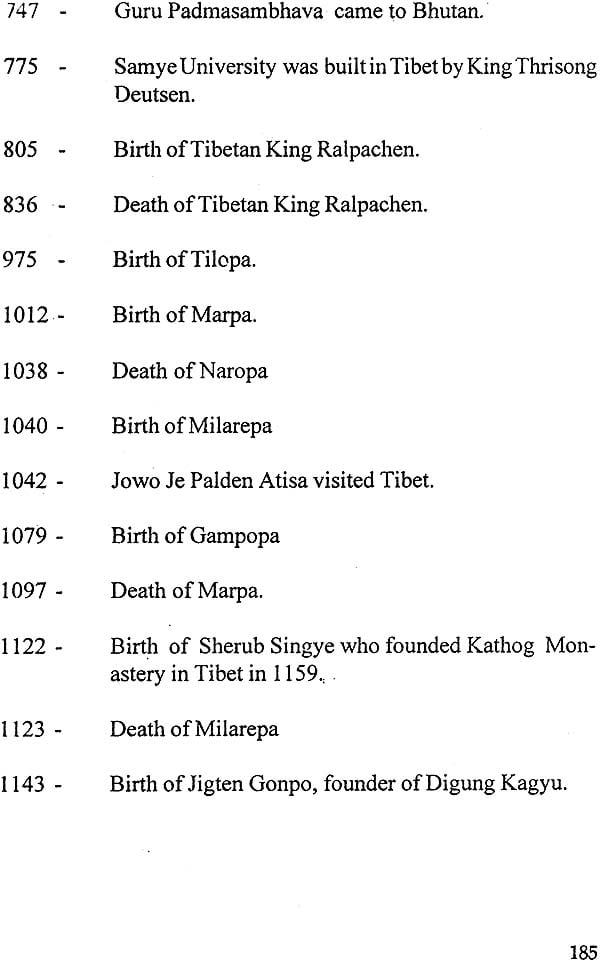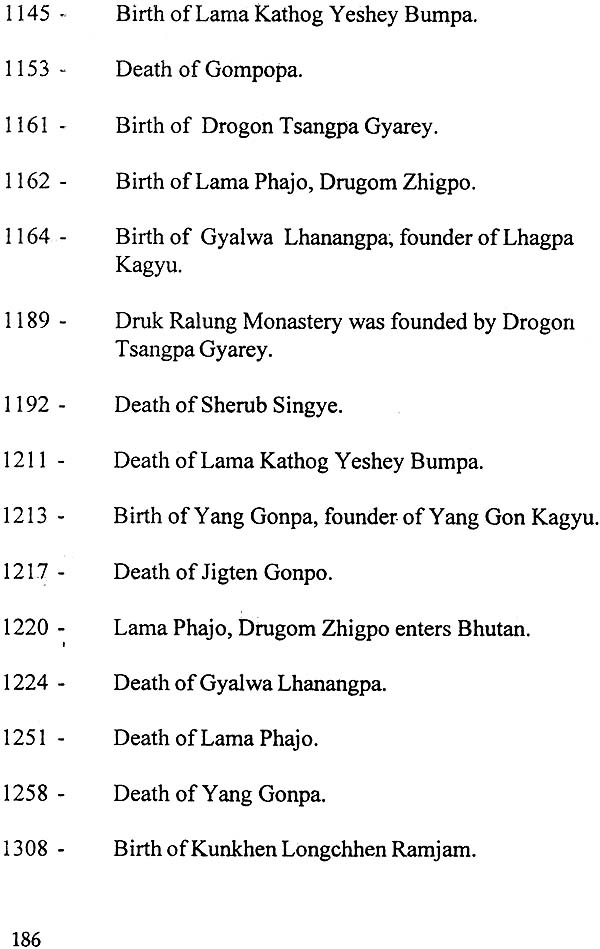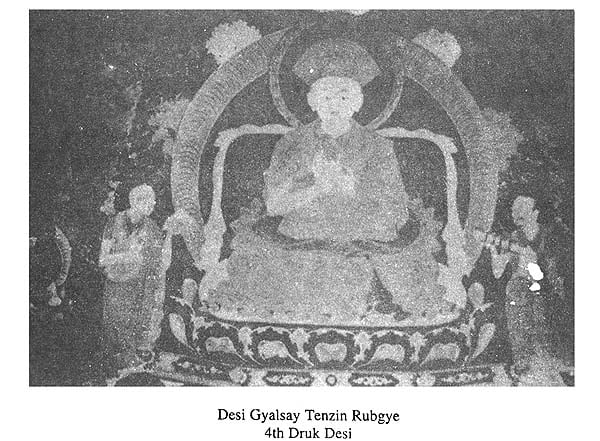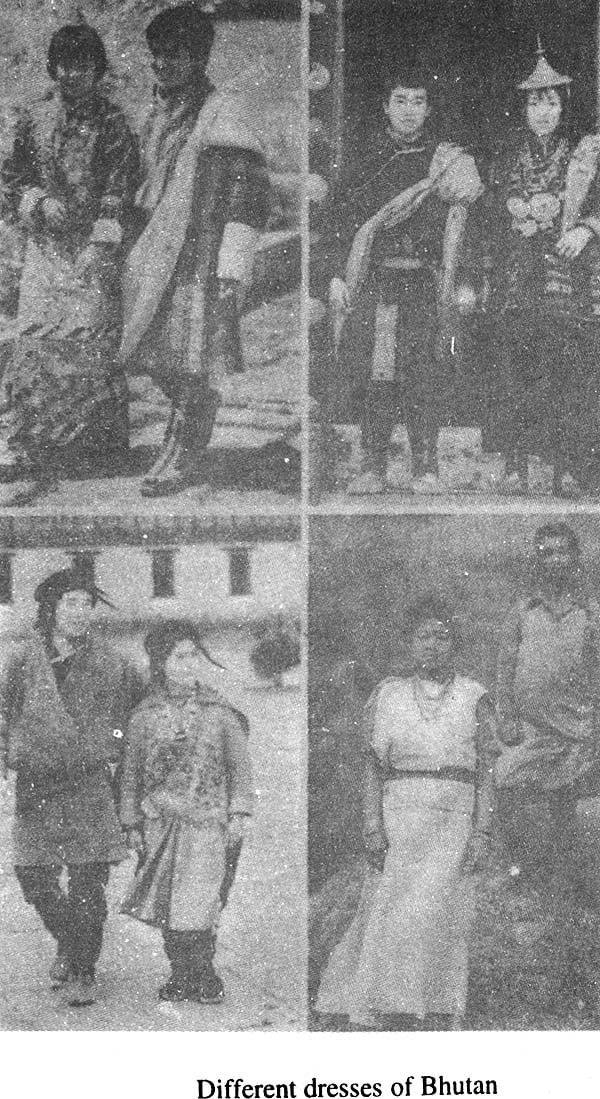
A Political and Religious History of Bhutan (1651-1906)
Book Specification
| Item Code: | NAM609 |
| Author: | Dr. C. T. Dorji |
| Publisher: | Prominent Publishers |
| Language: | English |
| Edition: | 1995 |
| ISBN: | 8186239030 |
| Pages: | 259 (10 B/W Illustrations) |
| Cover: | Paperback |
| Other Details | 8.5 inch x 5.5 inch |
| Weight | 330 gm |
Book Description
"A Political and Religious History of Bhutan (1651-1906)" is my second book based on my Ph.D. thesis which covers the period of Chhosi Nyidhen (dual system of government) introduced by Zhabdrung Rinpochhe in 1651 on the eve of hissacred retreat. The period, 1651-1906 is of special importance to our country as the era of practical application of the concept of Chhosi Nyidhen.
The need for such a book was pressed upon my attention from various sources. Therefore, this book has been planned keeping in line with the new syllabus of junior and high schools in Bhutan. The syllabus has undergone numerous changes over the last decade in the process of Bhutanization. The new syllabus includes Bhutanese history and geography, and social studies at all levels. This book is expected to meet the needs of the students of Bhutanese history and social studies.
The book is divided into three parts: Cultural, Political and Religious. The first part covers Bhutanese way of life including social, cultural and political structure. It provides a succint overall view of the country. This part would be useful not only to the students of Bhutanese history but also to the others. Foreigners who would like to know about Bhutan in general will find this book an informative guide.
The second part dealing with the political history covers the era of all the 54 Druk Desis. Each brief biography describes the political career and his contributions towards the implementation of Chhosi Nyidhen.
The third part pertaining to the religious history of the 49 Je Khenpos' era underlines the importance played by religion in Bhutanese society. Je Khenpos and the monastic bodies have always played vital roles in shaping and developing our society. The social, religious and the political structure of our country is based on the inspiration from the Buddhist doctrine and concept of Kyonchhosum (trinity) : Sangye Chhyo-dang Gedun-surn (Buddha, Dharma and Sangha).
While writing this book, I have kept in mind the needs of young students and the readers to have access to stock of accurate facts regarding the main events of Bhutanese history pertaining to the Chhosi Nyidhen (dual system of government) introduced by Zhabdrung Rinpochhe in 1651 in Bhutan. It delineates clearly the roles of the Druk Desi and the Je Khenpo in implementing the dual system.
The dates and events impressed on the minds of a boy or girl of tender age are not easily effaced in later life and hence great care has been taken to avoid any misrepresentation of facts. An attempt has also been made to include in the chronology the exact dates of all important historical events in the light of the best sources available from 747 AD to the present day for the benefit of students of Bhutanese history.
In view of this fact, I have not spared any pains to do this work as thoroughly as the circumstances would permit me. A special attention has also been paid to the spellings of Bhutanese names and usage of Bhuto-English terminology so that the students might not be confused with different spellings and usage adopted.
However, inspite of my best attempts, the book may not be free from typographical errors or mistakes of other kinds. Therefore, I shall feel obliged if teachers using this book can draw my attention to any shortcomings which might come to their notice. It will enable me to up-date the next edition.
The amount of success that I will achieve, it is for the readers to judge, if the students and teachers find this book useful then I shall consider my labours amply rewarded.
My inexpressible thanks are due to several senior officials in the Royal Government of Bhutan who have enthusiastically read my thesis and graciously given their valuable advice, views, comments and suggestions. Among them, I must make special mention of his Excellency Lyonpo Dawa Tsering, His Excellency Lyonpo Dago Tshering, Dasho Perna Wangchen, Dasho Thinley Gyamtsho and late Dasho Rigzin Dorji. I am also grateful to late Dasho Rigzin Dorji without whose help I would not have been able to obtain government clearance to submit the thesis to the university and its publication.
I owe special thanks to Helen Fielding and Sheila Scoby for kindly editing the manuscripts. I do not have words to thank them for their immeasurable help and good counsel. I must thank Mr. Wangdi, Ms. Chetan Zangmo and Ms. Chimi Dolkar for their help in various capacities and my eldest son Chenda Wangchuck for his continuous support in putting the manuscripts in proper shape and designing the jacket. My thanks should also go to my wife Sangay Xam and Mr. S. Mohan, proprietor of Prominent Publishers, Delhi, India for publishing this book.
| Preface | vii | |
| Name of Country | 1 | |
| Land | 2 | |
| Dzongkhags | 4 | |
| Mountain Peaks | 5 | |
| Rivers | 5 | |
| Race | 7 | |
| Languages and Dialects | 8 | |
| General Outlook and Customs | 10 | |
| Dress and Jewellery | 11 | |
| Food and Beverages | 12 | |
| Birth | 13 | |
| Marriage | 13 | |
| Death | 15 | |
| Astrology | 16 | |
| Indigenous Medicines | 17 | |
| National Festivals and Sports | 17 | |
| Music and Dance | 19 | |
| Arts and Architecture | 21 | |
| Economy | 22 | |
| Coins, Currency and Postage | 23 | |
| Religion | 24 | |
| Literature | 27 | |
| Education | 29 | |
| Hereditary Monarchy | 33 | |
| 1 | H.H. Dcsi Umzey Tenzin Drugyel | 47 |
| 2 | H.B. Dcsi Tenzin Drukda | 49 |
| 3 | H.H. Desi Chhogyel Minjur Tenpa | 51 |
| 4 | H.H. Desi Gyalsay Tenzin Rubgye | 53 |
| 5 | H.H. Dcsi Gedun Chhophcl | 58 |
| 6 | H.H. Desi Ngawang Tshering | 59 |
| 7 | H.H. Desi Umzey Penjor | 60 |
| 8 | H.H. Desi Druk Rubgye | 61 |
| 9 | H.H. Desi Geshey Ngawang Jamtsho | 63 |
| 10 | H.H. Desi Gongsa Mipham Wangpo | 64 |
| 11 | H.H. Desi Zimpon Penjor | 66 |
| 12 | H.H. Desi Ngawang Gyaltshen | 66 |
| 13 | H.H. Desi Chhogyel Sherub Wangchuk | 67 |
| 14 | H.H. Desi Druk Phuntsho | 69 |
| 15 | H.H. Desi Wangzob Druk Tenzin | 69 |
| 16 | H.H. Desi Zhidhar | 70 |
| 17 | H.H. Desi Kunga Rinchhcn | 71 |
| 18 | H.H. Desi Chhotul Jigme Singye | 72 |
| 19 | H.H. Desi Druk Tcnzin | 73 |
| 20 | H.H. Desi Umzey Chapchhab | 73 |
| 21 | H.H. Dcsi Chhogycl Sonam Gyaltshen | 74 |
| 22 | H.H. Desi Druk Namgyel | 75 |
| 23 | H.H. Desi Chhogycl Sonam Gyaltshen | 76 |
| 24 | H.H. Desi Sangay Tenzin | 76 |
| 25 | H.H. Desi Umzey Parob | 77 |
| 26 | H.H. Desi Byop Chhyoda | 78 |
| 27 | H.H. Dcsi Chhotul Tshulthrim Daba | 78 |
| 28 | H.H. Desi Zhabdrung Thutul, Jigme Daba | 79 |
| 29 | H.H. Desi Chholay Yeshey Gyaltshen | 80 |
| 30 | H.H. Desi Tshaphub Dorji Namgyel | 81 |
| 31 | H.H. Desi Sonam Drugyel | 82 |
| 32 | H.H. Desi Gongzim Tenzin Drukda | 83 |
| 33 | H.H. Desi Chhoki Gyaltshen | 83 |
| 34 | H.H. Desi Dorji Namgyel | 84 |
| 35 | H.H. Desi Adab Thinlcy | 85 |
| 36 | H.H. Dcsi Chhoki Gyaltshcn | 86 |
| 37 | H.H. Desi Dorji Norbu | 87 |
| 38 | H.H. Desi Wangchuck Gyalpo | 88 |
| 39 | H.H. Dcsi Zhabdrung Thutul, Jigme Norbu | 89 |
| 40 | H.H. Desi Damchho Lhundub | 90 |
| 41 | H.H. Desi Jamtul Jamyang Tenzin | 90 |
| 42 | H.H. Desi Kunga Pal den | 91 |
| 43 | H.H. Desi Phuntsho Namgyel | 92 |
| 44 | H.H. Dcsi Tshewang Sithub | 93 |
| 45 | H.H. Desi Kagyud Wangchuck | 93 |
| 46 | H.H. Desi Tshewang Sithub | 94 |
| 47 | H.H. Desi Tsondul Pekar | 94 |
| 48 | H.H. Desi Jigme Namgyel | 96 |
| 49 | H.H. Desi Kitshao Dorji Namgyel | 97 |
| 50 | H.H. Desi Chhogyel Zangpo | 98 |
| 51 | H.H. Desi Lam Tshewang | 99 |
| 52 | H.H. Desi Gawa Zangpo | 100 |
| 53 | H.H. Desi Pam Sangay Dorji | 101 |
| 54 | H.H. Dcsi Chholay Yeshey Ngodub | 101 |
| 1 | H.H. Je Pekar Jungney | 108 |
| 2 | H.H. Je Sonam Yozer | 109 |
| 3 | H.H. Je Pekar Lhundub | 110 |
| 4 | H.H. Je Dernchho Pekar | 110 |
| 5 | H.H. Je Zodpa Thinley | 111 |
| 6 | H.H. Je Ngawang Lhundub | 112 |
| 7 | H.H. Je Ngawang Thinley | 112 |
| 8 | H.H. Je Tenzin Norbu | 113 |
| 9 | H.H. Je Shacha Rinchhen | 113 |
| 10 | H.H. Je Tenzin Chhogyel | 114 |
| 11 | H.H. Je Ngawang Thinley | 115 |
| 12 | H.H. Je Kunga Jamtsho | 116 |
| 13 | H.H. Je Yonten Thaye | 116 |
| 14 | H.H. Je Tenzin Namgyel | 117 |
| 15 | H.H. Je Kunga Gyaltshen | 118 |
| 16 | H.H. Je Sherub Singye | 118 |
| 17 | H.H. Je Jamtul Yeshey Dorji | 119 |
| 18 | H.H. Je Jamyang Gyaltshen | 120 |
| 19 | H.H. Je Ngawang Chhogyel | 121 |
| 20 | H.H. Je Chholay Yeshey Gyaltshen | 122 |
| 21 | H.H. Je Jampe1 Daba | 122 |
| 22 | H.H. Je Jigme Gyaltshen | 123 |
| 23 | H.H. Je Jigme Daba | 124 |
| 24 | H.H. Je Chhoje Shacha Gyaltshen | 124 |
| 25 | H.H. Je Sherub Gyaltshen | 124 |
| 26 | H.H. Je Yonten Jamtsho | 125 |
| 27 | H.H. Je Perna Zangpo | 126 |
| 28 | H.H. Je Rinchhen Zangpo | 126 |
| 29 | H.H. Je Perna Zangpo | 127 |
| 30 | H.H. Je Jampel Jamtsho | 127 |
| 31 | H.H. Je Yonten Gyaltshen | 128 |
| 32 | H.H. Je Tshulthrim Gyaltshen | 128 |
| 33 | H.H. Je Kunga Peljor | 129 |
| 34 | H.H. Je Shedub Yozer | 129 |
| 35 | H.H. Je Shacha Gyaltshen | 130 |
| 36 | H.H. Je Yonten Pelzang | 130 |
| 37 | H.H. Je Kunga Singye | 131 |
| 38 | H.H. Je Shacha Gyaltshen | 131 |
| 39 | H.H. Je Lodyo Gyaltshen | 132 |
| 40 | H.H. Je Pekar Yozer | 132 |
| 41 | H.H. Je Ngawang Donden | 133 |
| 42 | H.H. Je Chhoje Thinley Gyaltshen | 133 |
| 43 | H.H. Je Tenzin Lhundub | 134 |
| 44 | H.H. Je Chhoje Thinley Gyaltshen | 134 |
| 45 | H.H. Je Thinley Jamtsho | 135 |
| 46 | H.H. Je Darnchho Gyaltshen | 135 |
| 47 | H.H. Je Sherub Lhundub | 136 |
| 48 | H.H. Je Jamyang Rinchhen | 136 |
| 49 | H.H. Je Rigzin Nyingpo | 137 |
| Appendices | 139 | |
| Glossary | 169 | |
| Chronology | 183 | |
| Bibliography | 237 | |
